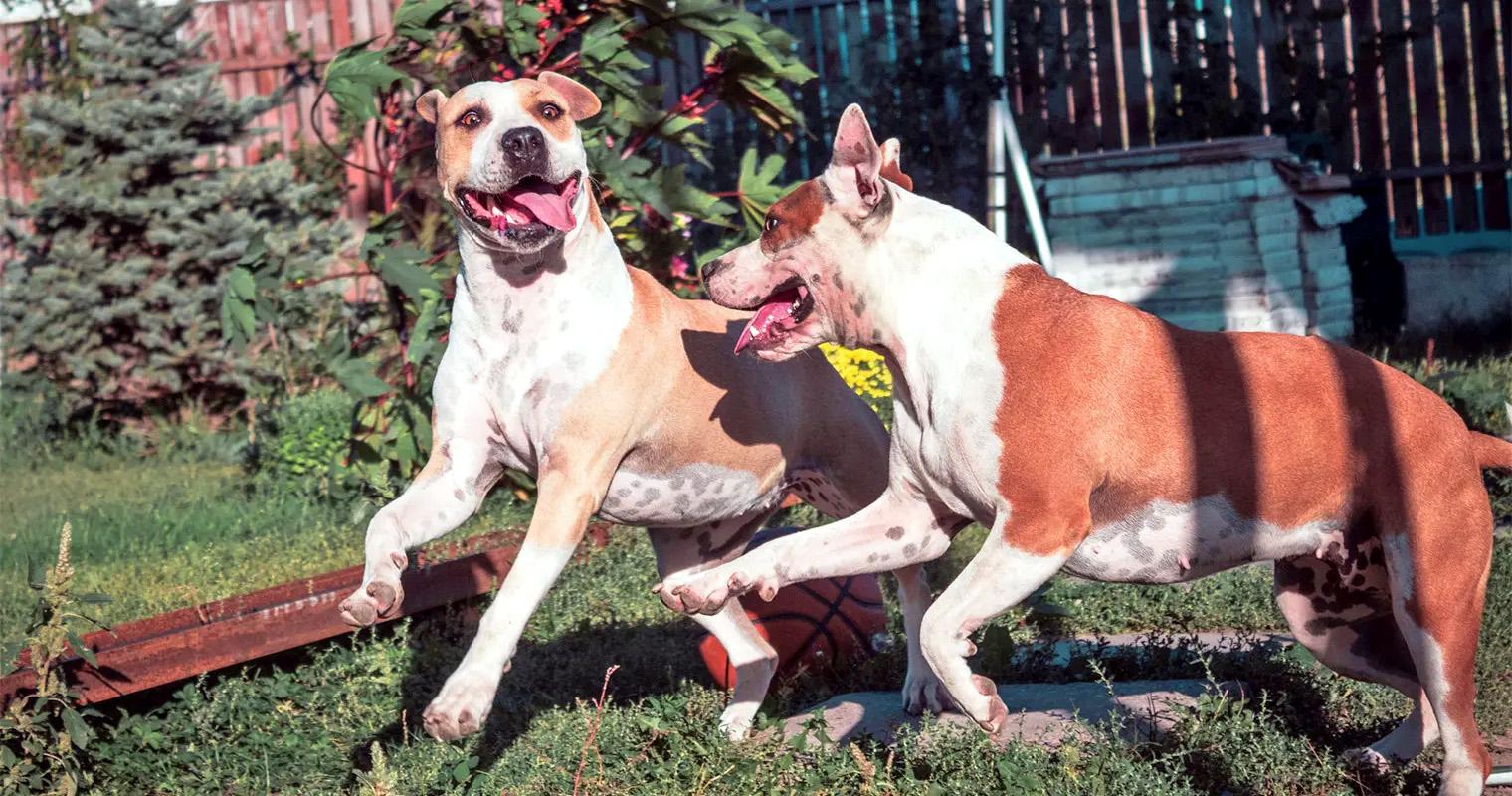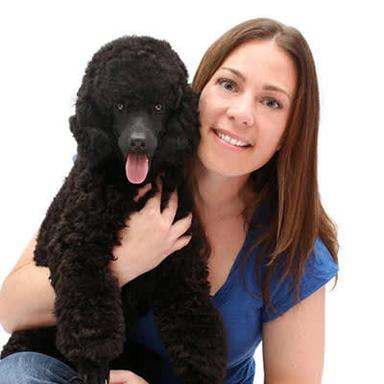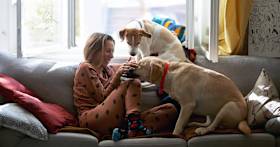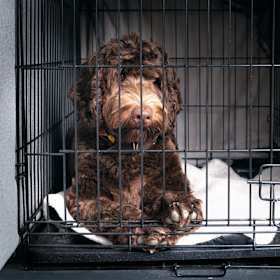The Pros and Cons of Getting a Second Dog: Adoption Advice
Here’s everything there is to consider before adopting a second dog.
Here’s everything there is to consider before adopting a second dog.
by Jackie Brown, | March 13, 2024

Wirestock / iStock
If you are already a parent to one dog, you’re definitely in on the secret that life is better with a pup in it. So, by now, you’ve probably asked yourself, Would life be even better with two dogs?
Before we jump to the obvious “yes,” there are a few more questions you need to ask yourself before you jump into the two-dog life. It’s important to consider why you want a second dog, how having a second dog will affect your routine, and whether your existing dog would enjoy having a canine friend — or at least tolerate a new dog in the family.
Adopting a second dog is a big decision for most families. Going from one dog to two dogs creates new challenges, but bringing home a second dog can offer plenty of benefits for the entire family. If you’re wondering when to get a second dog, consider some of these upsides:
Two dogs that get along well together always have a friend to play with. It’s nice for dogs to have a companion of the same species, even if they are just snoozing the afternoon away at home.
Two active dogs often romp and play together, which helps them get more exercise than they might if they were each on their own.
This one is a benefit for the human family members. Two dogs in the house means twice the snuggles, twice the funny antics, twice the companionship, and twice the love.
Dogs that are prone to separation anxiety often feel better staying home without their human family if they have a dog friend to hang out with. Bonus if the second dog is calmer than the first, as they can help provide a serene example for the nervous dog.
Adopting a second dog means moving one more dog out of homelessness and into a forever family with people who love them.
Sadly, some people find that they do regret getting a second dog. Not all families can cope with the demands of owning two dogs, and some individual dogs would simply prefer to be the “only dog” rather than have a canine companion. To make sure you don’t end up feeling like getting a second dog was a mistake, consider these potential cons of bringing home dog number two:
Two dogs means you have to buy twice the food and treats and pay double cost for veterinary care and preventive medications. Also, factor in twice the cost for training, grooming, and boarding and/or pet sitting.
Although most people can usually walk two dogs together, you’ll have to pick up two times as much poop, wash twice as many bowls and bedding, and brush, trim nails, and do other grooming tasks for two rather than one.
If you have a dog that deals with barking, digging, destructive chewing, or other behavioral concerns, your new dog might pick up your old dog’s bad habits. Although getting a second dog can sometimes help dogs with separation anxiety, it’s possible that it could make things worse, or that the new dog might also develop anxiety.
Not all dogs get along. Introducing a new dog to your existing dog always carries the risk of squabbling or aggression between the dogs. Two dogs might become jealous of each other and compete for your attention.
Get the entire family on board with the idea of a second dog, and consider your dog’s temperament and experience around other dogs. Give yourself a quick “should I get a second dog quiz” by considering the following questions:
Is my home suitable for another dog? Does the landlord allow two dogs?
Can I afford the added expenses of a second dog?
Is my current dog likely to get along with a second dog?
Do I have the time and energy to care for and train another dog?
Does my family/roommate want another dog?
It can be tricky to figure out if your existing dog would enjoy a friend. If your dog regularly sees other dogs in the neighborhood, out during walks, or at the dog park, pay attention to how they react. Some signs your dog might enjoy a canine buddy include:
Seeking interaction with other dogs
Sniffing and tail wagging
Play bows and other invitations to play
Running or chasing other dogs without squabbles
Relaxed body posture
Some signs your dog might do best as an “only dog” include:
Ignoring or avoiding other dogs
Growling or barking at other dogs
Hair raised on the back
Tail held between the legs
Trying to get away from other dogs
If you’re not sure how your dog feels about other dogs, be cautious before adopting a second dog. Arrange a few puppy playdates with friends or relatives to see how your dog reacts to other dogs.
Once you know your family is ready for another dog, you might wonder when to get a second dog. If you have an adult dog, you can adopt your second dog any time you feel ready. If your first dog is a puppy, it’s best to wait until that dog is one to two years old before bringing home a new dog. This gives you time to bond with your first dog and put your full attention toward training. Once it’s time, consider the following:
There is no wrong choice here, but deciding between adopting a puppy or adult dog often comes down to your family’s readiness to take on the extra work a puppy needs, such as housetraining, crate training, basic training, and keeping a close eye on the puppy to limit destructive chewing or dangerous situations. It can sometimes be easier for an adult dog to accept a new puppy, but it’s also possible for two adult dogs to get along well if their personalities mesh and they are introduced properly.
When choosing a new rescue dog, carefully consider your existing dog’s personality and evaluate any dogs you’re interested in adopting. Look for a dog with a personality that is complementary to your existing dog’s demeanor. If you have a calm or shy dog, they probably won’t enjoy living with a wild, rambunctious second dog. If your first dog has a ton of energy, choose a second dog with a similar energy level. If possible, find out if the dog you’re considering is known to get along with other dogs.
It’s not necessary for two dogs to be the exact same size, but huge differences in size — for instance, a Chihuahua and Mastiff — can be problematic for some dogs. To increase the odds of your two dogs getting along and being able to play safely together, try to keep differences in size minimal.
Bringing home a second dog is an exciting time, but it’s important to go about it carefully. Introducing two dogs properly can be the difference between two dogs that live happily together and dogs that squabble or don’t enjoy each other’s company. Follow these tips for the best chance at success:
Choose a place neither dog knows, and have both dogs on leash (one human per dog). Go for a walk together side by side, allowing the dogs to sniff each other and interact at their own pace. Plan on walking up to an hour, and move apart slightly if either dog seems nervous or bothered. Then, slowly move closer together to try again.
When your new dog first comes home, temporarily remove your existing dog’s toys, chews, and bed so the dogs don’t squabble over them. Later, when you see the dogs are getting along, slowly reintroduce high-value items, making sure each dog has their own.
When your second dog comes home, head out with both dogs on a walk around the neighborhood to burn off energy and give them a chance to become reacquainted on more neutral ground. It’s best to have two humans, each holding one leash.
It’s best to temporarily crate or separate the dogs at nap time, bed time, or any other time you’re not actively supervising. This gives them personal space and allows more time for them to become accustomed to each other.
Second dog syndrome is an interesting phenomenon that happens when families adopt a second dog but feel the dog does not live up to the intelligence or obedience of the first dog. This is generally because people make comparisons between the older, trained dog and the new dog, which often needs a lot of training to catch up to the first dog. It’s important to spend time alone with the new dog to give yourself the opportunity to bond with them the same way you bonded with your first dog.
Adopting two puppies at once is almost never advised because the puppies tend to bond too closely with each other. Rather than looking to you for guidance and comfort, two puppies often become too dependent on each other and unable to function as individuals. However, adopting two bonded adult dogs that lived together in a previous home can work out well.
Some dogs are happier with a second dog, and other dogs prefer to be an “only dog.” Before bringing home a second dog, assess whether your existing dog enjoys the company of other dogs to gauge if they might enjoy a canine family member.

Jackie Brown lives in sunny Orange County, CA, where she works as a freelance writer and editor. When she’s not on deadline, you can find her paddling her outrigger canoe in the Pacific Ocean or hiking in the foothills with her miniature poodle and two young boys.

Adoption Advice

Adoption Advice

Breed Info

Behavior & Training
Wondering if you should crate train your new pup? Yes, you should! Read on for everything you need to know about introducing your dog to crate-training.